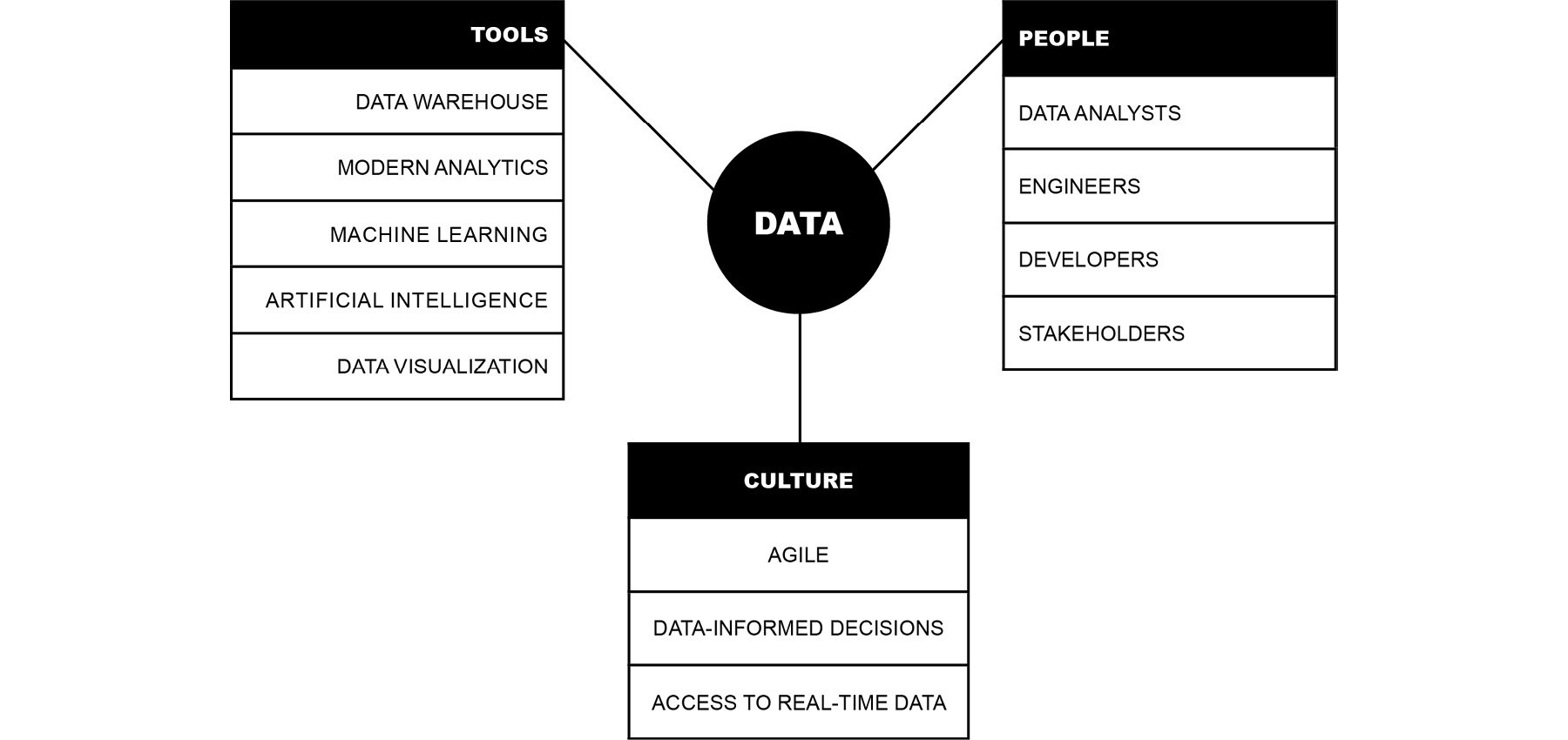DataOps
In order to be efficient and agile with implementing data analytics in your company, you need the right culture and processes. This is where the concept of DataOps comes in. DataOps removes the co-ordination barrier between data (analysts, engineers, and scientists) and operations (administrators and operations managers) teams in order to achieve speed and accuracy in data analytics.
DataOps is about a culture of collaboration between different roles and functions. Data scientists have access to real-time data to explore, prepare, and serve results. Automated processes and flows prove invaluable to this collaborative effort between analysts and developers, as they provide easy access to data through visualization tools. Relevant data should be served to end users via web or mobile applications; this is usually possible with an Application Programming Interface (API). For CEOs, DataOps means faster decision-making, as it allows them to monitor their business at a high level without waiting for team leaders to report. Figure 1.1 tries to explain the idea of a collaborative DataOps culture:

Figure 1.1: The DataOps process
Once a team attains the desired speed and accuracy in testing their hypotheses (such as the likelihood of someone buying a product based on their characteristics and behavior), they are able to derive better insights. Once there are better insights, there are more actionable and reasonable decision points for business stakeholders that minimize risks and maximize profits.

























































